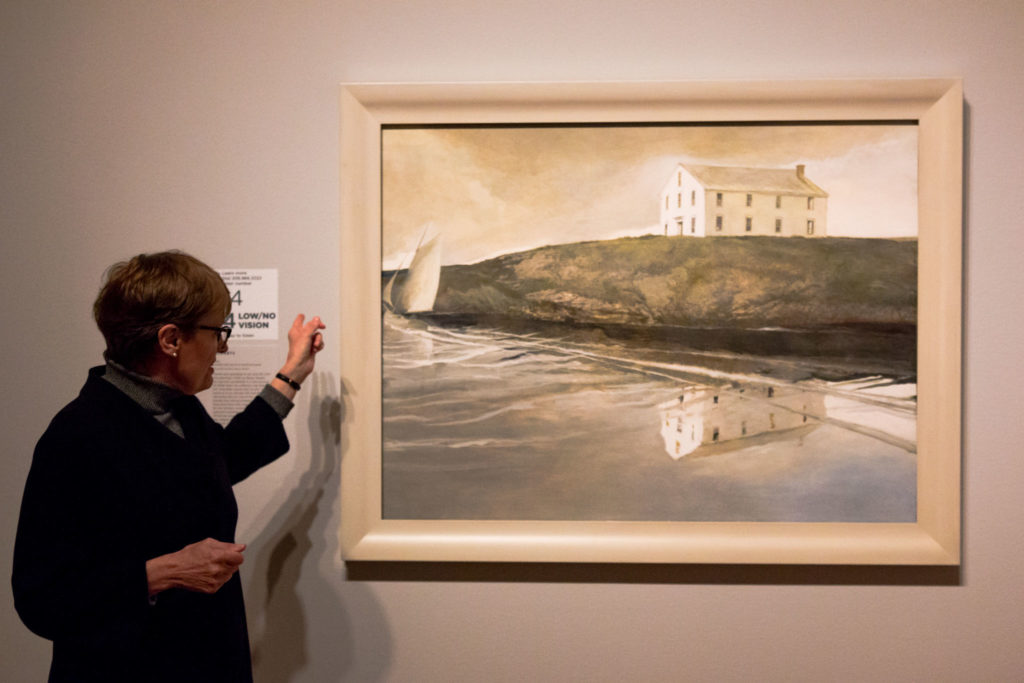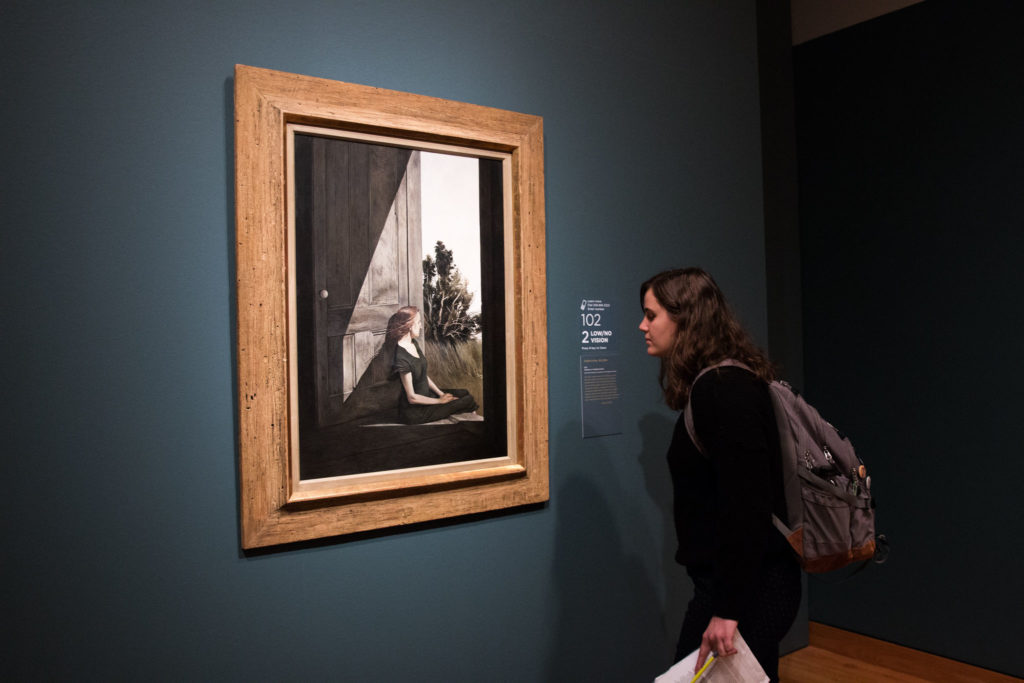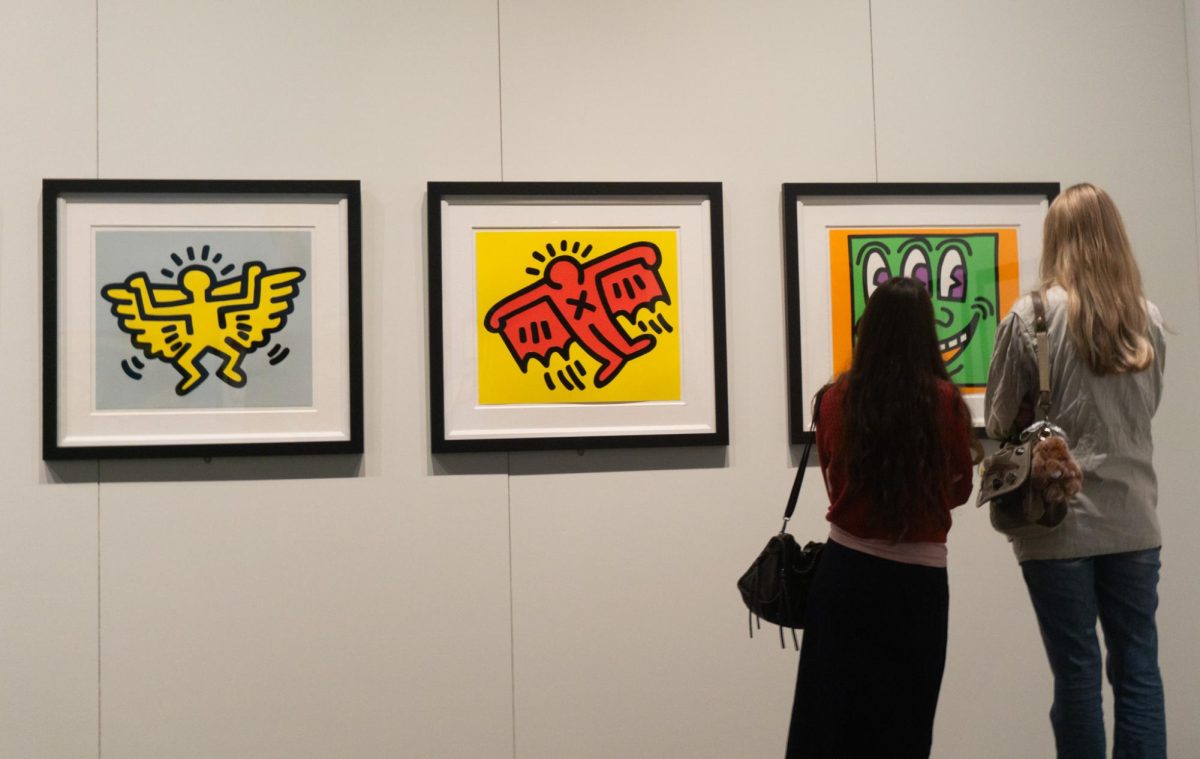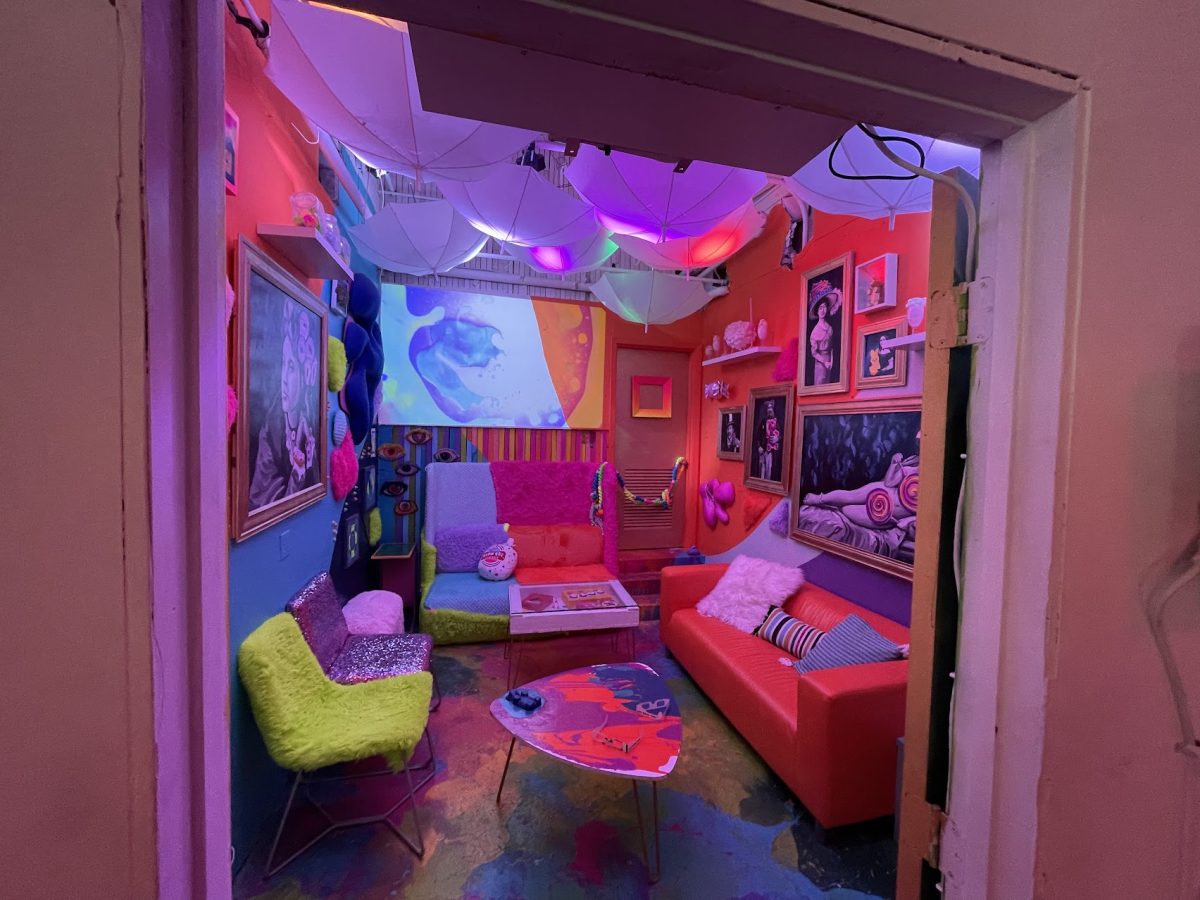Famous American painter, Andrew Wyeth, possessed the talent to depict the contrast between life and death and between emptiness and vacancy. He mastered intense realism that drew in audiences for decades. The new exhibition at the Seattle Art Museum (SAM) portrays the tragedy of the artist’s life and the vitality of his imagination, while encouraging visitors to learn about Wyeth’s life growing up in Chadds Ford, Pennsylvania.
As the first showcase of his work since his death in 2009, Andrew Wyeth: In Retrospect, is a memorial celebrating his 75-year career. For this exhibition, 110 of Wyeth’s paintings are being displayed to capture the context of his life and his interpretation of the American experience.
“‘In Retrospect’ attempts to sum up an artist’s career,” said former Art and Art History chair and current art history professor, Dr. Naomi Hume. “For the general public, [Wyeth] is not intimidating. It is a work that draws you in, and then presents you with questions…his work suggests these imaginative possibilities.”
The installation begins by portraying his work how it would have been viewed at his first exhibit at the Museum of Modern Art in New York City on Oct. 19. The exhibit at the SAM also opens on Oct. 19—a day which proved to be a symbolic date in Wyeth’s life. October 19 was the first day he entered his father’s studio for the only proper art training he would receive, and was also the day his father was struck and killed in his car at a train crossing in Chadds Ford. This traumatic event haunted Wyeth’s work and his home. Viewers can experience Wyeth’s defining themes of life and death as they browse this collection.
While Wyeth’s hyper-realism might seem like it is in the business of presenting a naturalistic space, his work is shrouded in abstraction, capturing the rhythm and peculiarity of nature.
“He looks upon the world with his own imagination… this can be hard to separate because it is so realistic,” Patricia Junker, SAM’s Ann M. Barwick, Curator of American Art, said.
Junker described learning about Wyeth’s artistic process while researching in Chadds Ford and revisiting his work. She sorted through drawers, pulling out never-before-seen sketches while in the company of Wyeth’s friends and family. Viewers have the opportunity experience some of the unfinished drafts that show his artistic process.

The Museum Curator explains the painting “goodbye” the last painting by Andrew Wyeth.
“When you have a retrospective… you’ll get works that are more or less finished. Sometimes they’ll show sketchbooks or articles to see these rich parts of their work, and it can be really fascinating,” Dr. Hume said.
Films that fascinated Wyeth, like 1925 silent film “The Big Parade,” play on loop in the exhibition.
Wyeth, drawn to the nature of film, casted the characters in his paintings as if he were directing a movie.
The people of Chadds Ford became recurring characters of Wyeth’s work, and he incorporates individuals that he admired deeply, like his beloved friend and frequent artistic muse Christina Olson. The physical attributes of his subjects, be it their ruggedness or imperfect disposition, became a focus for Wyeth.
“All his paintings have really interesting backstories,” digital design student Cindy Huhn said. “It’s different how he uses characters all throughout their lives, almost like he’s taking photographs of them.”
Wyeth is not as well-known on the west coast as he is in the New England and greater east coast area. The SAM made sure that the exhibit was holistic and accessible to an unfamiliar crowd. Because it is the centennial of the Wyeth’s birth, other museums, such as the Portland Art Museum, have compiled exhibitions to present Andrew Wyeth’s work.
Wyeth once said, “You can be in a place for years and years and not see something, and then when it dawns, all sorts of nuggets of richness start popping all over the place. You’ve gotten below the obvious.”
Jacqueline may be reached at
jlewis@su-spectator.com









